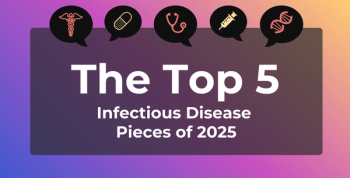
Dr Natasha Halasa Discusses Principal Investigator Responsibilities

Natasha Halasa, MD, MPH, Vanderbilt University Medical Center, discusses her role as principal investigator of the Vanderbilt site of the New Vaccine Surveillance Network.
Natasha Halasa, MD, MPH, of
Halasa is also a professor of pediatrics at VUMC, Division of Pediatric Infectious Diseases. Her research focuses on determining the burden of diarrheal and respiratory illnesses in pediatric and specialized populations and how to reduce them.
Transcript
Could you describe the New Vaccine Surveillance Network's primary goals and the role you play in predicting the impact of potential new vaccines?
The New Vaccine Surveillance Network has been going on for over 2 decades, and 1 of the main goals is to understand the impact that new vaccines, or current vaccines, have on the burden of illness, both for acute respiratory illness and acute diarrheal illness.
This network was very important in describing the burden of influenza disease in children, which then led to the recommendations for a universal influenza vaccine. The cool thing about this is active prospective population-based surveillance. What that means is that any child that comes in with respiratory symptoms, so fever, cough, runny nose, or shortness of breath, they're approached and asked if they will enroll into the study.
Then, we collect specimens, so we'll get a nose swab and/or a throat swab and test it for the most common viruses. That's regardless of if the pediatrician is testing for illnesses like RSV, flu, or other things. What we do is we're able to show what the true burden of illness and diseases that are out there. Once we have a baseline to show, before a vaccine is introduced, what the baseline is. Then, after a vaccine is introduced, we can show over time how that is impacted.
This was one of the ways that the network was able to show that influenza was a very important cause of illness in children, both in the emergency department in the inpatient and outpatient settings. So, each year, we look at vaccine effectiveness for influenza vaccines. We're able to show how the vaccine is able to reduce severe disease and how effective it is.
This was also important for acute gastroenteritis. For the rotavirus vaccine, before it was introduced, rotavirus was the most common cause of acute gastroenteritis here in the United States. Prior to the introduction, the network was able to show that it was the most important cause of illness for acute gastroenteritis, or AGE, why kids were coming to both the emergency department, as well as being admitted for severe illness.
Once the vaccine was introduced, just 2 years later, it was able to show that the burden of illness for rotavirus actually went down and that norovirus became the most common cause of acute gastroenteritis for children both in the emergency department and inpatient setting.
Newsletter
Stay ahead of policy, cost, and value—subscribe to AJMC for expert insights at the intersection of clinical care and health economics.







































